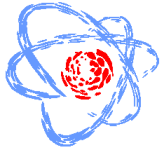Speaker
Dr
Inga Zinicovscaia
(Joint Institute for Nuclear Research)
Description
The process of lanthanum, chromium, uranium and vanadium accumulation and sorption by Spirulina platensis biomass from single- and multi-component systems was studied for biotechnological purposes. The influence of multi-component system on the spirulina biomass growth was less pronounced in comparison with the single-component ones. To trace the uptake of metals by spirulina biomass the neutron activation analysis was used. In the experiment on the accumulation the efficiency of studied metal uptake changes in the following order La(V) > Cr(III) > U(VI) > V(V) (single-metal solutions) and Cr(III) > La(V) > V(V)> U(VI) (multi-metal system). The process of metals biosorption was studied during a two-hour experiment. The highest rate of metal adsorption for single-component systems was observed for lanthanum and chromium. While for the multi-component system the significant increase of vanadium and chromium content in biomass was observed. The results of present work show that spirulina biomass can be efficiently applied for metal removal from industrial wastewater.
Author
Dr
Inga Zinicovscaia
(Joint Institute for Nuclear Research)
Co-author
Dr
Alexey Safonov
(Frumkin Institute of Physical Chemistry and Electrochemistry, Russian Academy of Sciences)

